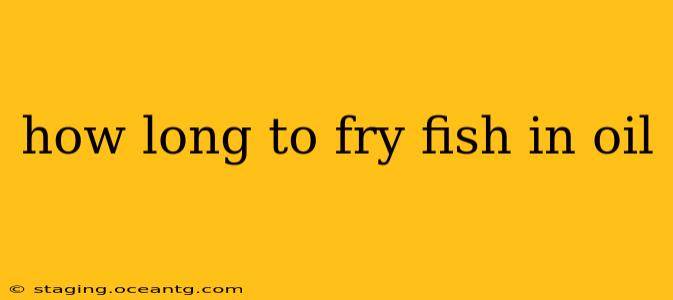Frying fish is a classic cooking method that yields deliciously crispy results. However, the cooking time can vary significantly depending on several factors, including the type of fish, its thickness, and the temperature of the oil. Getting it right ensures a perfectly cooked, flaky interior and a golden-brown, crunchy exterior. This guide will delve into the intricacies of frying fish, helping you achieve that perfect fry every time.
What Affects Fish Frying Time?
Several factors influence how long you need to fry your fish. Understanding these factors will help you adjust your cooking time accordingly.
- Type of Fish: Different fish types have varying thicknesses and densities. Thicker, denser fish like cod or haddock will take longer to cook than thinner, more delicate fish like tilapia or sole.
- Thickness of the Fish: The thickness of your fish fillets is a major determinant of cooking time. Thicker fillets require a longer frying time to cook through completely. Aim for uniformly thick fillets for even cooking.
- Oil Temperature: Maintaining the correct oil temperature is crucial. Too low, and the fish will absorb excessive oil and become greasy. Too high, and it will burn before cooking through. The ideal temperature is generally between 350°F (175°C) and 375°F (190°C).
- Size of the Fish Fillets: Larger fillets will naturally take longer to cook than smaller ones. Avoid overcrowding the pan, as this will lower the oil temperature and lead to uneven cooking.
How Long to Fry Different Types of Fish?
While there's no single definitive answer, here's a general guideline:
- Thin fillets (Tilapia, Sole): 2-3 minutes per side
- Medium-thick fillets (Cod, Haddock): 3-5 minutes per side
- Thick fillets (Salmon, Swordfish): 5-7 minutes per side
Important Note: These are estimations. Always use a food thermometer to ensure the internal temperature reaches 145°F (63°C) for safe consumption.
How do I know when my fish is cooked?
The fish is cooked when it flakes easily with a fork and the internal temperature reaches 145°F (63°C). The outside should be golden brown and crispy.
What happens if I fry my fish for too long?
Overcooked fish will be dry, tough, and potentially rubbery. The outside might also be overly browned or even burnt.
What happens if I fry my fish for too short a time?
Undercooked fish will be raw and potentially unsafe to eat. It will also lack the crispy texture you're aiming for.
What kind of oil is best for frying fish?
High-smoke-point oils like canola, vegetable, or peanut oil are best suited for frying fish. These oils can withstand high temperatures without breaking down or imparting undesirable flavors.
How do I prevent my fish from sticking to the pan?
Ensure your oil is hot enough before adding the fish. Don't overcrowd the pan. Consider lightly coating the fish in flour, cornmeal, or breadcrumbs to create a barrier between the fish and the pan.
Should I bread my fish before frying?
Breading adds flavor and helps create a crispier exterior. However, it will add to the overall frying time.
By following these tips and understanding the factors that influence frying time, you'll be well on your way to frying fish to crispy, golden perfection every time. Remember to always prioritize food safety and use a thermometer to ensure your fish is cooked through.
